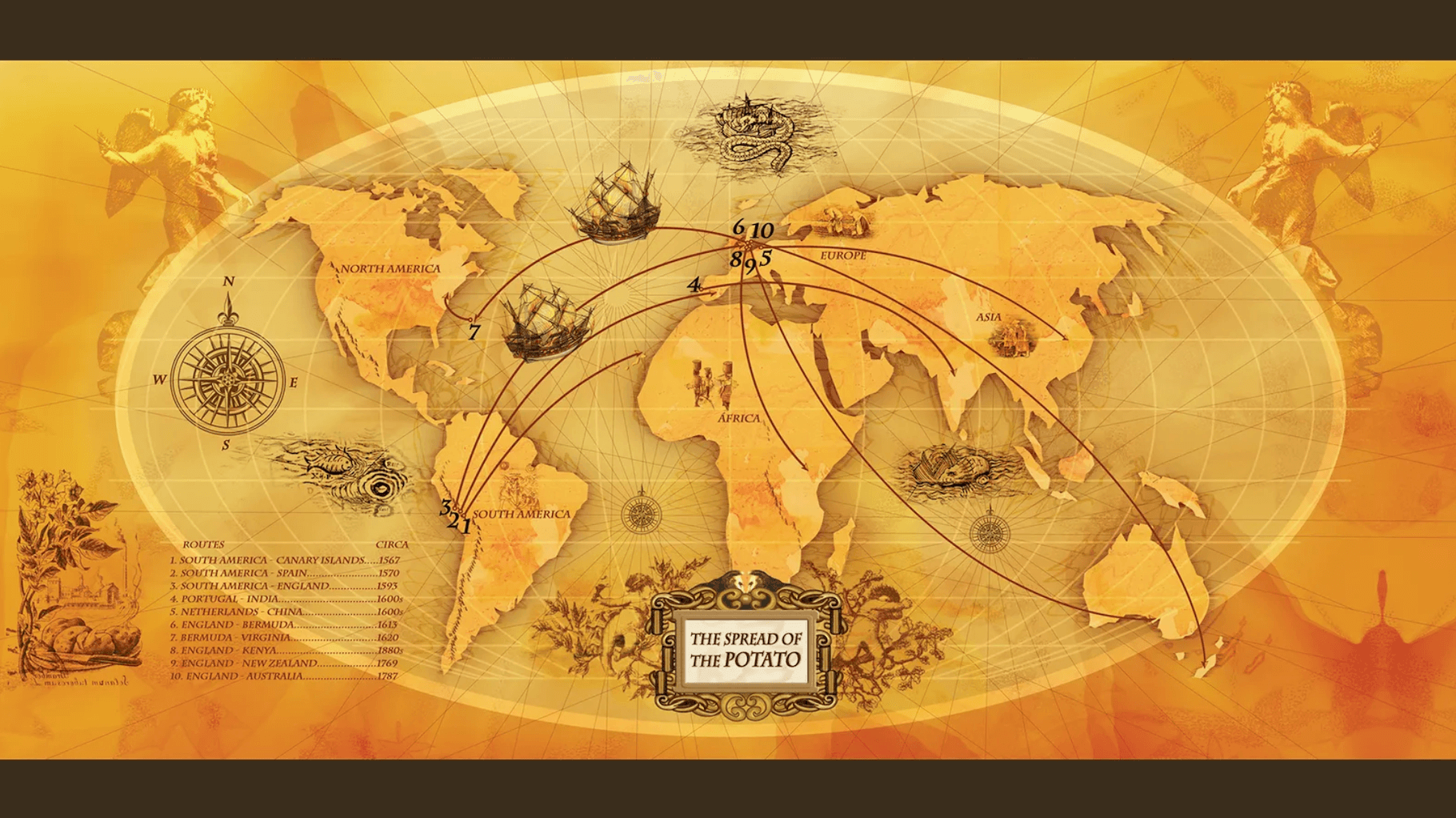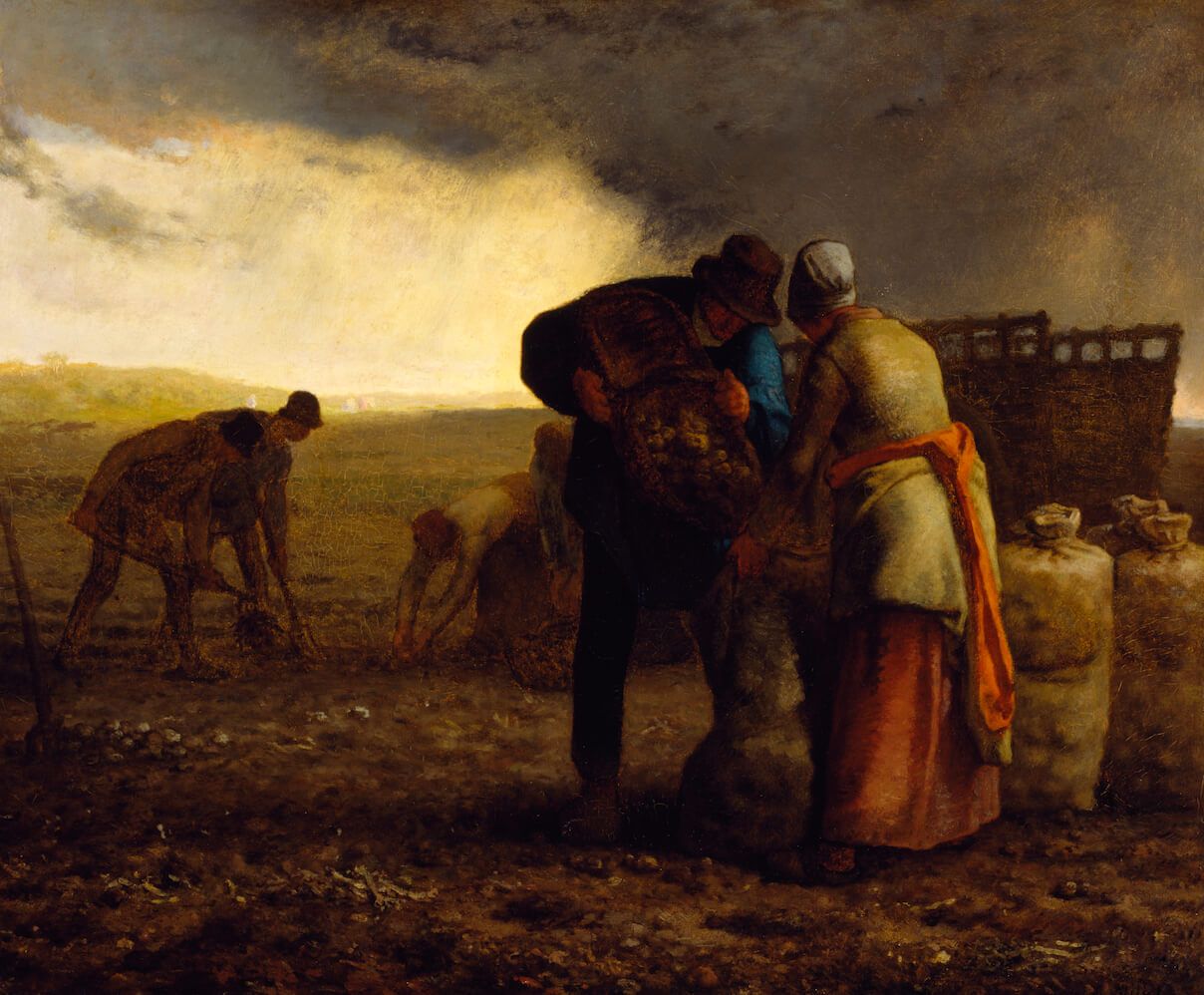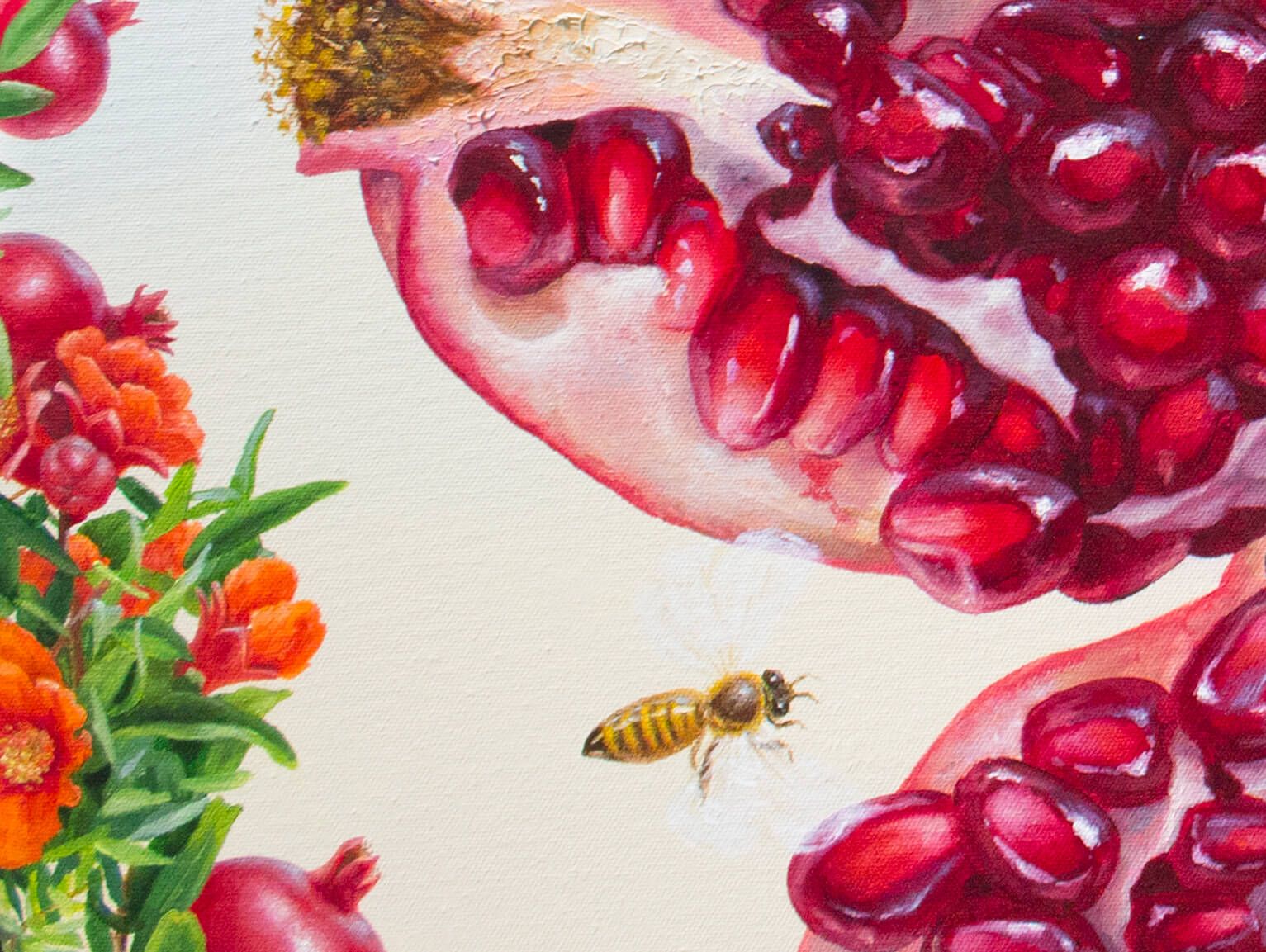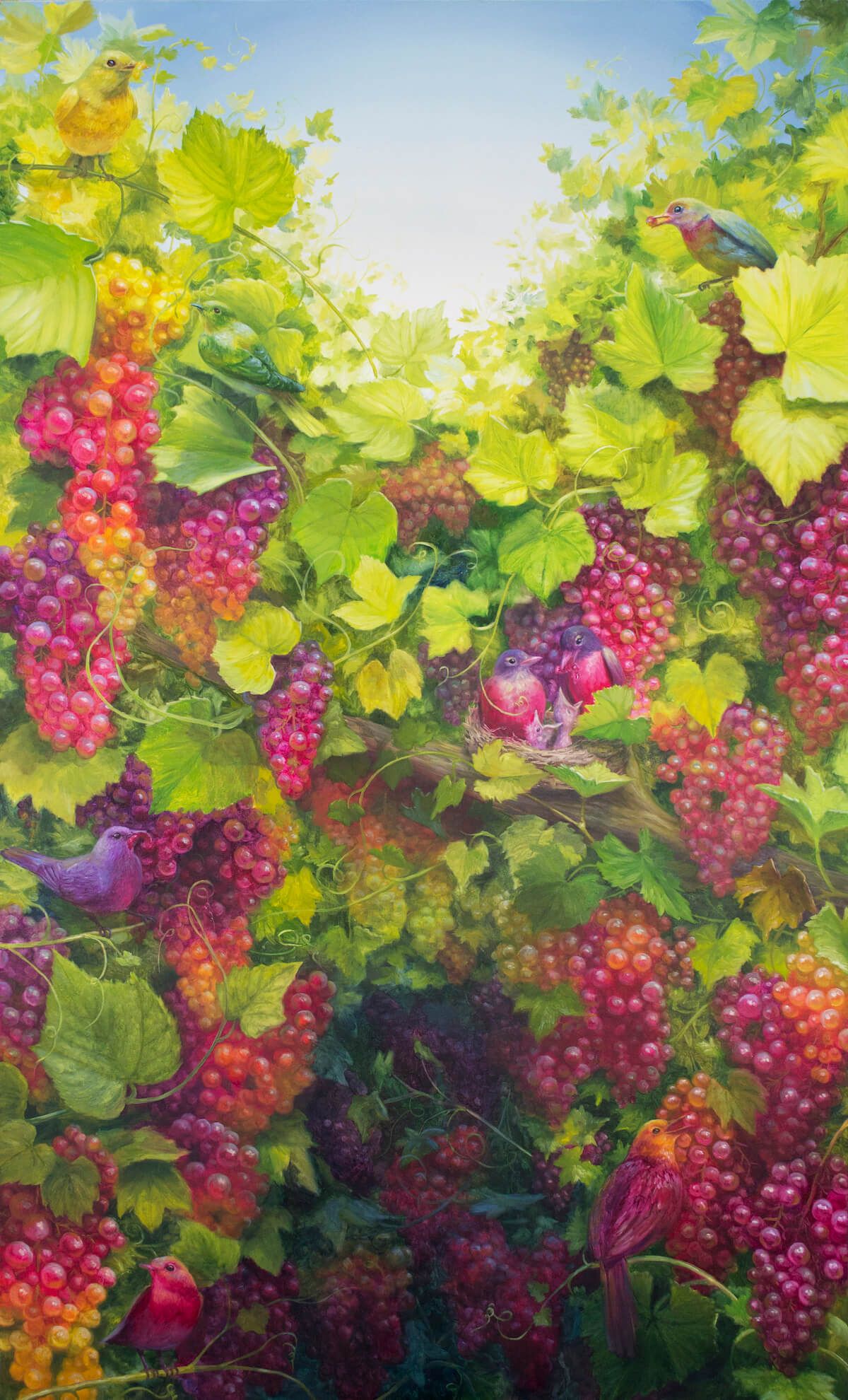The Art of Potato
‘The Potato Eaters,’ by Vincent van Gogh (1853 - 1890), Nuenen, April 1885.
lithograph on paper, 31.2 cm x 39.6 cm
Credits: Van Gogh Museum, Amsterdam (Vincent van Gogh Foundation)
There are various important artists and artworks that contemplated and featured this unassuming vegetable, with Vincent Van Gogh’s ‘The Potato Eaters’ being one of the most iconic ones.
“Painting peasant life is a serious thing, and I for one, would blame myself if I didn’t try to make paintings such that they give people who think seriously about art and about life serious things to think about,” wrote Van Gogh in a letter to his brother Theo, dated April 30th, 1885.
Through his use of dark colors, protruding bones, deep line strokes, and impossibly small details, Van Gogh captures the glum and difficult life of a peasant family.
According to the Van Gogh Museum, “Van Gogh saw the Potato Eaters as a showpiece, for which he deliberately chose a difficult composition to prove he was on his way to becoming a good figure painter. The painting had to depict the harsh reality of country life, so he gave the peasants coarse faces and bony, working hands. He wanted to show in this way that they ‘have tilled the earth themselves with these hands they are putting in the dish ... that they have thus honestly earned their food’.
He painted the five figures in earth colors – ‘something like the color of a really dusty potato, unpeeled of course.'

‘The Potato Eaters,’ by Vincent van Gogh (1853 - 1890), Nuenen, April-May 1885 oil on canvas, 82 cm x 114 cm.
Credits: Van Gogh Museum, Amsterdam (Vincent van Gogh Foundation).
“The message of the painting was more important to Van Gogh than correct anatomy or technical perfection. He was very pleased with the result: yet his painting drew considerable criticism because its colors were so dark and the figures full of mistakes. Nowadays, the Potato Eaters is one of Van Gogh’s most famous works.”
It is interesting to note that this artwork was painted after one of the potato’s darkest chapters with those who farm it and depend on it — the tragic Irish Famine (1845-52), also known as the Great Famine, caused by a potato disease leading to starvation, illness, and emigration. A third of Ireland's population was dependent on the potato for sustenance.
There are many artworks that capture our complex relationship with this crop, and while difficult to mention them all, here is a list of ten well-regarded works that prominently feature potatoes:
1. Vincent van Gogh - "The Potato Eaters" (1885)
2. Jean-François Millet - "The Potato Harvest" (1855)
3. Jacek Yerka - "Potato Cranes" (1988)
4. Horacio Quiroz - "Potato with Pipe" (2019)
5. Georges Rouault - "The Potato Peeler" (1901)
6. Kazimir Malevich - "Still Life with Fish and Potatoes" (1913)
7. Nicolae Grigorescu - "Peasant Women with Apples and Potatoes" (1880)
8. Ilka Gedo - "Potatoes in a Bowl" (1980)
9. János Vaszary - "Woman Peeling Potatoes" (1920)
10. Jules Bastien-Lepage - “October (French - Saison d’octobre)” 1878 it is also known as Picking Potatoes (récolte des pommes de terre), The Potato Gatherers or Woman Gathering Potatoes.

The International Potato Center created a map to show the global movement of the potato from its origin in the Andes (Credit: International Potato Center)
one that is cherished and beloved in various cultures, often symbolizing grit, survival, nostalgia, and pure joy. Because of its hardiness, there is much research into taking it to Mars.
From boiled, baked and fried to sliced, dried and stuffed, the potato is a versatile and starchy tuber with various health and well-being benefits.
In some traditions, such as with the Quechua — South American Indians living in the Andean highlands from Ecuador to Bolivia — the potato plays an important role in marriage. It is said that if a man wants to marry a woman, the groom’s mother presents the bride with a potato named for its ability to “make the daughter-in-law cry.” The daughter-in-law must then carefully peel the vegetable, which resembles a pine cone in shape, and if she removes more than is necessary, she will not be allowed to marry the woman’s son.
Another tradition involves a goddess, or rather two, mother and daughter, connected to the planting and harvesting of potatoes. The communities would show respect to the earth and to the crops that sustain these communities by making offerings of potatoes and other crops to ‘Pachamama,’ or Mother Earth. She is the most prominent goddess connected to potatoes from Incan mythology. One of her daughters, Axomama — also known as "Potato Mother" or "Mother of the Potatoes” — was invoked by the Andean people to bless their harvests and provide an abundance of potatoes.
From traditions to legends, the potato’s journey through history is a deep and multilayered one. The word "potato" has its origins in the Spanish word "patata," which was derived from the Taíno word "batata." The Taíno people were native inhabitants of the Caribbean, where potatoes were once cultivated.
The cultural and historical significance of the potato can be traced back to its origins in the Andean region of South America. It is believed that potatoes were domesticated around 8000 to 5000 BC by indigenous people living in modern-day Peru and Bolivia. Potatoes were not only a primary food source but also a valued trade item that enabled early forms of social interaction and exchange between cultures.
Potatoes were introduced to the European continent in the second half of the 16th century by Spanish explorers, and they quickly became a dietary staple due to their ability to grow in difficult conditions and high nutritional content. From there, it made its way to different parts of the world, including the Arab world. There is no exact date when potatoes first arrived in the Arab world, but their introduction likely took place sometime between the late 16th and early 17th centuries through trade and cultural exchanges.
due to its versatility and adaptability to various climates, especially arid regions. It became a staple food in many Arab countries, either as a main ingredient or a side dish that complemented traditional dishes.
In Arab cuisine, potatoes are used in a variety of ways, such as in stews, salads, and fried or baked dishes. Some popular Arab dishes incorporating potatoes include Batata Harra (spicy potatoes with garlic and coriander), Batata Chap (deep-fried potato balls with minced meat), and Kibbeh (stuffed potato croquettes). Additionally, potatoes are used as fillings in dishes like samosas and savory pastries.
The delicious potato made its mark on the Arab and world cultures in various ways, including cuisine, agriculture, source of income, and nutrition. The potato has woven its way into the very fabric of human history and continues to be a vital component of world gastronomy.

Jean-François Millet - "The Potato Harvest" (1855). Oil on canvas. Courtesy The Walters Art Museum.
"Ar scáth a chéile a mhaireann na prátaí."
In English, this translates to: "Under the shelter of each other, the potatoes survive."
This proverb speaks to the importance of cooperation and community in overcoming hardships, emphasizing how working together can help everyone endure tough times—just as potatoes thrive when planted together in the same soil.

